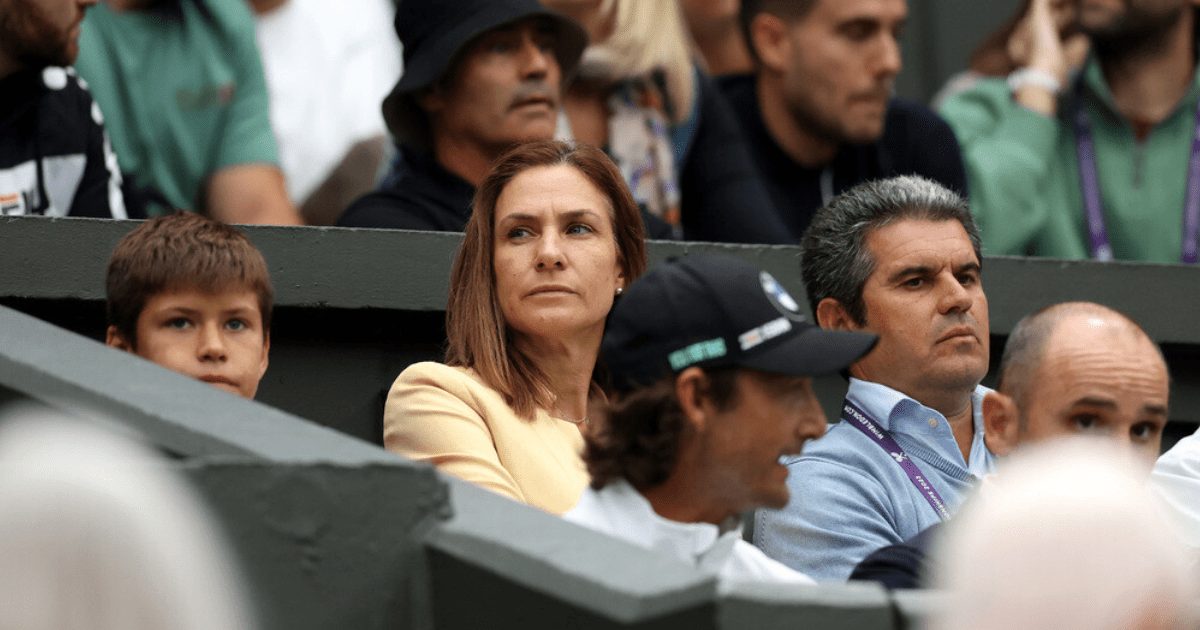Carlos Alcaraz Sr.: The Father and Coach
Carlos Alcaraz González, also known as Carlos Alcaraz Sr., is the father of tennis sensation Carlos Alcaraz. In the early 1990s, he had a successful career as a professional tennis player and was ranked among the top 40 players in Spain. As the director of the Real Sociedad Club de Campo de Murcia, he knows the ins and outs of the tennis world. Carlos Sr. introduced his son to tennis at the age of four and became his coach and mentor. He has been a constant presence by Carlos's side at high-profile tennis events, including Wimbledon 2023. In 2018, Carlos Sr. signed his son at Juan's Sport Academy, where former world number one player Juan Carlos Ferrera became his new coach and helped him improve his technique.
Virginia Garfia Escandón: The Supportive Mother
Virginia Garfia Escandón is the mother of Carlos Alcaraz. Although she is not involved in sports herself, she has been a pillar of support for her husband and son throughout their tennis careers. Virginia has attended numerous tournaments, including witnessing her son's historic victory at the US Open Championships in 2022.
Meet Carlos Alcaraz's Siblings
Carlos Alcaraz comes from a close-knit family and has three brothers. His older brother, Alvaro Alcaraz Garfia, is pursuing a career as an actor. Meanwhile, his two younger brothers, Sergio and Jaime Alcaraz, are currently in school.
Carlos Alcaraz's parents and siblings have played an important role in his journey to becoming a tennis star. Their unwavering support has undoubtedly contributed to his success on the court.

Frequently Asked Questions
How important is nutrition and diet to training as an elite tennis player
Tennis players are not exempt from the importance of nutrition and diet. A proper diet is essential for intense training, as it helps to provide energy, promotes recovery, and reduces injury risk. Diets of elite athletes typically include a balance of carbohydrates, protein, and fats as well as essential vitamins and minerals. Another important aspect is hydration, since maintaining a good fluid balance during play is essential to avoid fatigue and maintain focus.
How can a player of tennis balance training and school requirements?
Balancing academic responsibilities and intense training schedules is a significant challenge for aspiring tennis players. It requires excellent time management, prioritization, and often creative scheduling. Online education and flexible academic programs are a great way to accommodate the hectic training and travel schedules that young athletes have. Support from family, coaches, and educational institutions also plays a crucial role in ensuring players can pursue their athletic ambitions without compromising their education.
Can someone who starts playing tennis later still become a pro?
It is possible to play tennis professionally at an older age, even though it may be more difficult. Success will depend on athletic ability and dedication as well as access to good coaching and competition. It may take longer for late starters to achieve professional levels, as their training will be intense and highly focused.
What type of fitness training is important for tennis players?
Tennis is one of the most physically demanding sports. It requires a combination between aerobic endurance and anaerobic conditioning, as well a speed, power, strength, etc. Tennis fitness training involves cardiovascular exercises that improve endurance and strength, plyometrics exercises and explosive movements for speed and power as well as agility exercises designed to improve footwork. In order to build the coordination and endurance necessary for the physical demands placed on tennis players, core stability exercises as well as balance training are crucial.
What does the daily training schedule of a top tennis player look like?
Tennis players who are at the top of their game have a rigorous daily regimen that is meticulously planned. It usually involves several hours of court time, with an emphasis on tactical drills, technical drills and match situations. Players also participate in training sessions that are designed to improve strength, endurance, and agility. These sessions are complemented with flexibility and recovery exercises, such as massages, stretching, or physiotherapy. Proper nutrition and psychological coaching are also integral components, ensuring athletes maintain peak performance both physically and mentally.
Statistics
- Persistent mental training and sports psychology can help reduce performance anxiety by up to 60%, according to sports psychologists working with elite athletes.
- Nutritionists report that a tennis player’s diet should consist of about 55-60% carbohydrates, 15-20% protein, and 20-25% fats during intense training periods.
- Studies show that superior agility and speed among tennis players can reduce their reaction time by up to 30%, which is crucial during high-level matches.
- On average, it’s estimated that only 1 in 5000 high-level junior tennis players will develop into internationally ranked professionals.
- Engaging in structured video analysis sessions has been shown to improve a player’s tactical decision-making by approximately 35%.
External Links
myprocoach.net
tennisfitness.com
topendsports.com
atptour.com
tenniscompanion.org
How To
How to Create a Tennis Warm-up Routine
A warm-up for tennis matches should prepare both the mind and body to compete. Start with a light cardio exercise such as jogging, jumping jacks or stair climbing to increase your heart rate. Switch to dynamic stretches that focus on your legs and arms to increase flexibility without reducing strength. Use sport-specific movements to rehearse serves, volleys and groundstrokes. Practice agility exercises to fine-tune your footwork. End with short points, or practice serving to sharpen up your timing. A warm-up routine that includes all the exercises can increase your performance while reducing injury risk.

